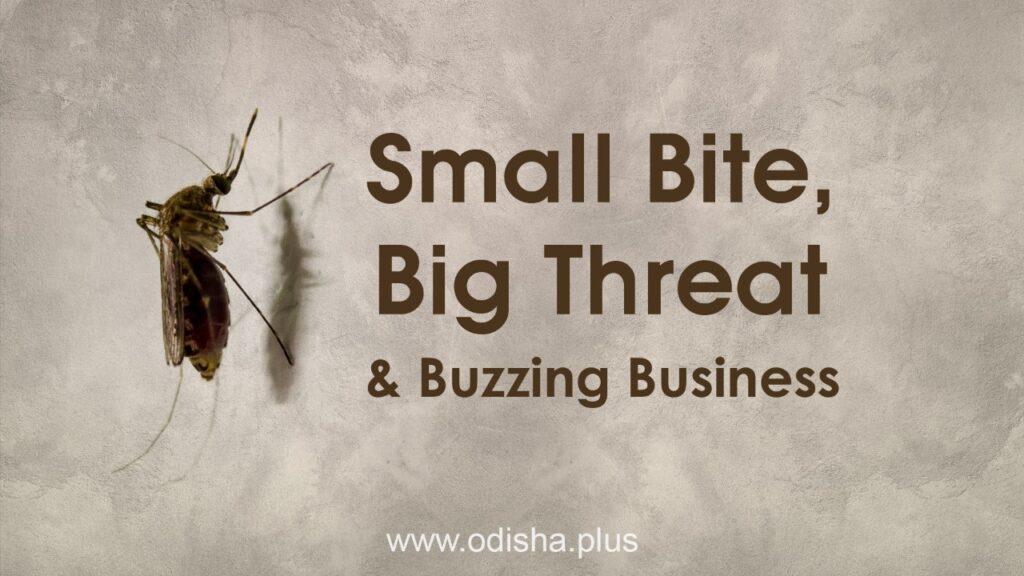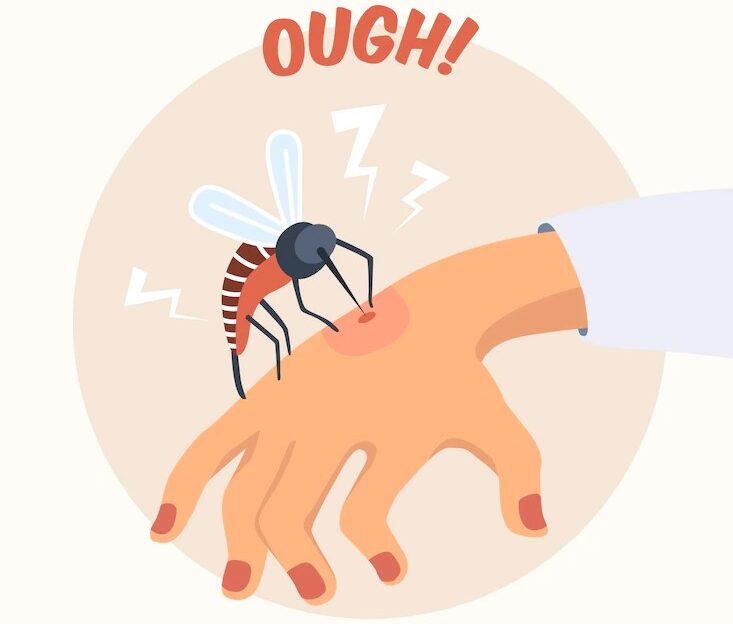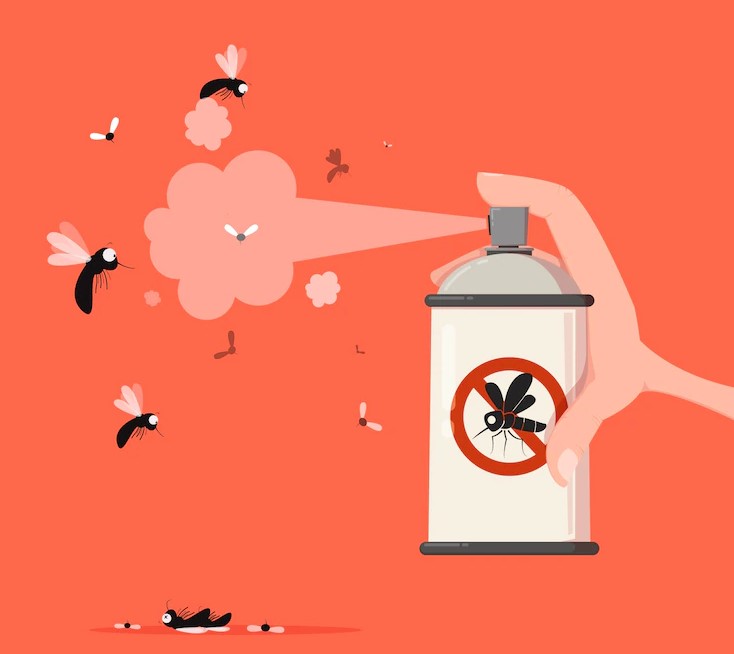Sanjeev Kumar Patro
….Despite vector borne disease control programme by governments in India, personal mosquito repellant products demand in country up by 2,690% between 1990 and 2020

Even as the World Mosquito Day is observed on August 20, the small bite continues to take a big toll across the globe. For the lethal sting, celebrated US author Katherine Applegate had called mosquitoes – the greatest mass murderers on planet Earth. And Science backs up the hyperbole.
According to World Health Organisation (WHO), mosquito-borne diseases kill nearly 7.25 lakh every year around the globe. The toll of Malaria alone stands at 6.02 lakh.
Mosquito Menace
Malaria and dengue are not the only mosquito fanned disease. Lethal diseases like Acute Encephalitis/Japanese Encephalitis and highly morbid Filariasis, Chikunguniya, Zika fever et al are mosquito borne.
While the WHO 2021 report shows a declining trend in Malaria cases and deaths worldwide, except for the pandemic years, the number of dengue cases reported over 8 fold rise over the last two decades. Dengue cases were up from 5.05 lakh to 5.2mn in 2019. The report has, however, measured a marginal drop in cases during the pandemic years.
It is for this mosquito menace, Russian-born American writer Issac Asimov had once said, “Human beings can easily destroy elephants, but we are helpless against mosquitoes.”

Mosquito Culling Challenge
Since elimination of mosquitoes could save the world from a largescale morbidity and mortality, WHO took the initiative in implementing vector control programme in countries across the globe, including India.
Mosquito Peril In India
In 1947, the when India achieved independence, mosquito-borne malaria bite was abnormally high. Around 22 percent of population (translated into 75 million cases) was stung by the disease. Deaths, annually, then stood at 8 lakh.
To take the sting out, in 1953 was launched the National Vector Control Programme. But given the enormity of Malaria, the programme became National Malaria Control Programme.
It is in 2002, the disease control prgrammes on other vector borne ones like Dengue, Chikungunya, filaria, etc were integrated. And the present National Vector Disease Control Programme comes into shape.
Under the vector control plan, phrased as Integrated Vector Management, government laid out the following to vector population.
- Indoor Residual Spraying (IRS) in selected high risk areas
- Supplying Long Lasting Insecticidal Nets (LLINs) to populationin mosquito-borne disease endemic areas
- Use of larvivorous fish, antilarval measures in urban areas including biolarvicides and minor environmental engineering including source reduction.
- Besides, IEC activities taken up to bring a change in behavioural ‘intolerance’ towards mosquito in the society.
Elaborating how challenging has been the mosquito menace, distinguished public health expert and President of National Academy of Vector Borne Diseases, Padmashri Dr AP Dash, said, “Mosquitoes developed resistance to insecticides sprayed to control the vector population. To address the insecticide resistant vector a Modified Plan of Operation launched in 1977-78 with an Odia doctor Dr Sadananda Pattanayak at the helm.”
Mosquito ‘Zero Tolerance’ Behaviour
Though the IEC activities started by governments (central, state) called for not allowing mosquito breeding grounds in home or the surroundings, the demand for mosquito repellant formulations have grown by leaps and bounds in the country, including Odisha.
For the big challenge by the tiny insect, the mosquito repellant industry has become a vibrant FMCG industry worldwide, including India.
As per Zion Market Research report, the global mosquito repellant market has generated a whopping $6.9 bn value in 2021. The forecast is the segment by clocking a strong 5.6 percent Compounded Annual Growth Rate (CAGR) will touch $10.28bn in next 6 years. The story is no less exciting in India.
The mosquito repellants include coils, mats, vaporizers, aerosols and creams.
As per the Entrepreneur India report, the mosquito repellent demand in India that is dominated by players like Reckitt Benckiser, Jyothi Laboratories, Godrej Sara Lee, S C Johnson, Balsara Hygiene, Bayer, and Tainwala Chemicals was worth only Rs 200 crore in 1990-91. Now, the demand has grown to around Rs 5,580 cr and is predicted to grow to over Rs 7,700 cr by 2025 (see the table below)
| Year | Demand (in Crores) |
| 1990-91 | Rs200 |
| 2000-01 | Rs 1000 |
| 2001-02 | Rs 1150 |
| 2002-03 | Rs1310 |
| 2003-04 | Rs1480 |
| 2004-05 | Rs1665 |
| 2005-06 | Rs1890 |
| 2006-07 | Rs2150 |
| 2007-08 | Rs2460 |
| 2008-09 | Rs2825 |
| 2009-10 | Rs3215 |
| 2010-11 | Rs3396 |
| 2011-12 | Rs3575 |
| 2012-13 | Rs3764 |
| 2013-14 | Rs3962 |
| 2014-15 | Rs4170 |
| 2015-16 | Rs4420 |
| 2016-17 | Rs4685 |
| 2017-18 | Rs4966 |
| 2018-19 | Rs5264 |
| 2019-20 | Rs5580 |
| 2024-25 | Rs7727 |
The table shows the demand in the country has grown by a whopping 2,690 percent in last 30 years. As per the report, demand for the products is directly proportional to mosquito borne disease burden in a state.

On the growing demand of personal mosquito control kits, Dr Dash said, “As the Indian mosquito repellent market is growing exponentially, foreign companies have launched their products in India till recently. However, the ‘Make in India’ programme of the Modi Government would help replace them.”
Odisha Scenario
As per the data available with Odisha Health Department, the burden of mosquito borne diseases in the State is given below.
| Year | Disease | Vector Mosquito | Cases |
| 2021 | Malaria | Anopheles | 25,503 – 3rd after Chhattisgarh and West Bengal |
| 2021 | Dengue | Aedes Egypti | 7548 – in top-10 dengue affected states in country. |
| 2021 | AES/Japanese Encephalitis | 15 Mosquito species (from Culex Vishnui to Anopheles barbirostris (West Bengal) are its vector.
|
279 – figures in top-10 states.
{In 2019, with 2335 cases had the 3rd highest cases in country.} |
| 2021 | Chikungunya | Aedes | Highest cases reported in State in 2015. No case in 2021and 2022 till date. |
| 2021 | Filaria | Culex | 67,717- third highest cases in country.
Owing to the disease, Hydrocele cases in Odisha recorded at 32,790- highest in country. |
Speaking on the decline in incidence of mosquito-borne diseases in the State, Dr Dash said, “Thanks to the DAMaN (Durgama Anchalare Malaria Nirakaran) programme of Odisha Government, malaria incidence stands significantly reduced.”
DAMaN has been tailormade for remote malaria endemic areas in the State. Under this initiative, along with stringent vector control measures, this programme lays emphasis on surveillance, rapid testing and treatment.
How Mosquitoes Got Their Day?
Though Patrick Manson demonstrated the presence of malarial parasites in the blood stream in 1894, even in 1878, he was the first to reveal that parasite that causes human disease can infect mosquito (filarial worm), Sir Ronald Ross (born in India) on Aug 20, 1897, made a landmark discovery. He detected malarial parasite in the stomach tissue of female anopheles mosquito, which was fed with malaria patient blood for 4 days.
This discovery has led to discovery of transmission of malarial parasite in human beings. It is for Sir Ross, mosquitoes too have their day in a calendar.
Later in 1906, scientists discovered that Aedes Egypti mosquito is the career of dengue virus. And the challenge from mosquitoes gets bigger thereafter with Yellow fever, Chikungunya, Zika fever, Acute Encephalitis/Japanese Encephalitis etc.
(The views expressed by the author are personal.)
Tags: #MosquitoDay #ZeroTolerance #PublicHealth #Vectorbornediseases #DAMaN #denguevirus #FMCGindustry #MalariaMarketResearch





























